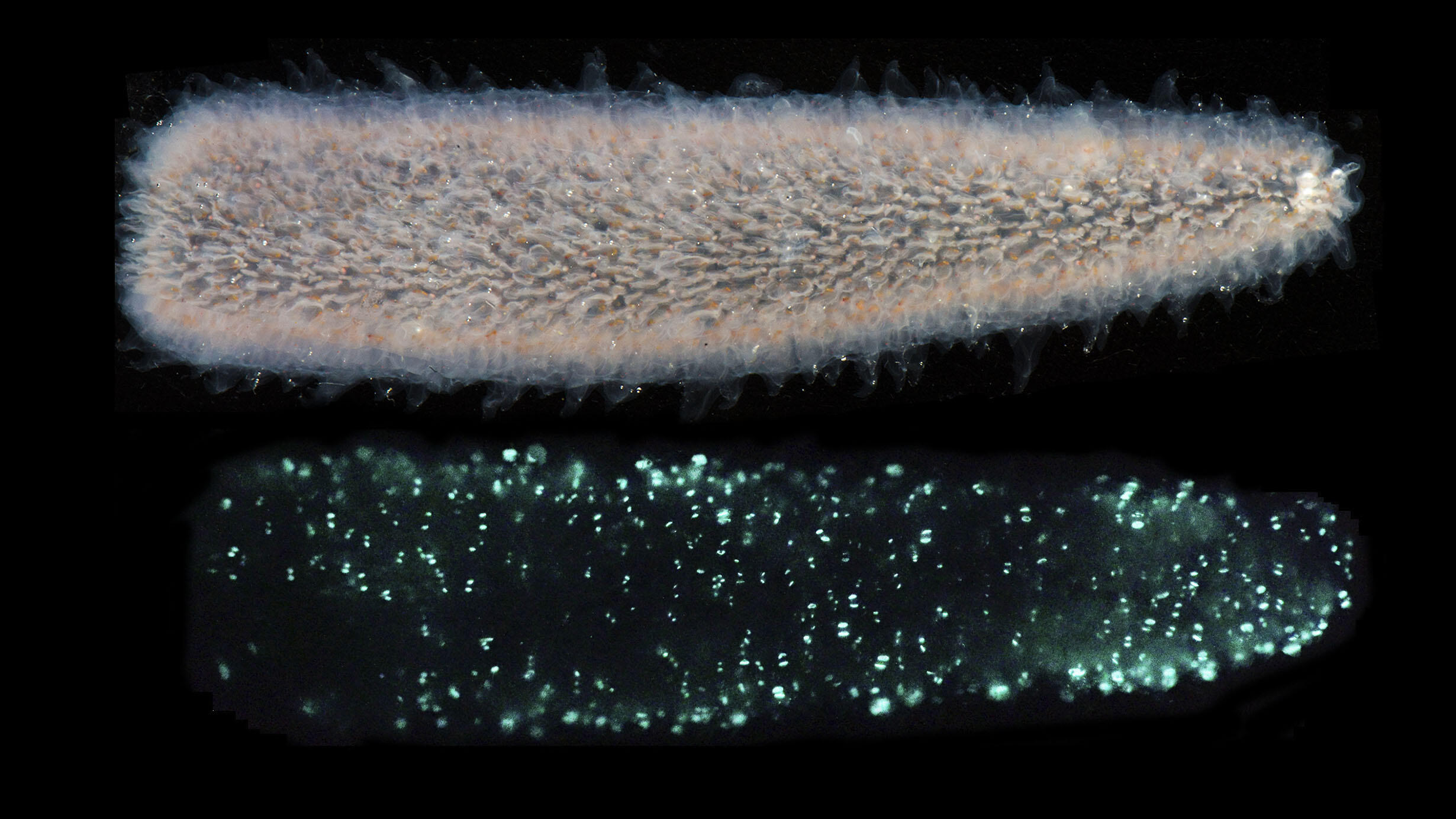 Pyrosoma atlanticum under white light (top) and producing bioluminescence following mechanical stimulation.
Pyrosoma atlanticum under white light (top) and producing bioluminescence following mechanical stimulation.© D. Gruber
In 2017, a group of scientists in a submersible off the coast of Brazil were testing the ability of a soft robotic hand to collect delicate marine life when they grabbed a selection of gelatinous and glowing “sea pickles.”
These sausage-sized pyrosomes (Pyrosoma atlanticum) are actually colonies of thousands of tiny animals—each with a heart and a brain—that work together to move, eat, breathe, and reverberate in blue-green light. Although they are widely known for their gigantic blooms and spectacular light—“pyrosoma” means “fire body” in Greek—many of the most basic facts about their bioluminescence remain elusive.
Photo courtesy of OceanX
So the expedition’s scientists, including Museum Research Associate David Gruber and Department of Ichthyology Curator John Sparks, began a second journey to determine the cause of these pyrosomes’ unique bioluminescent displays, which, unlike many bioluminescent animals, can be triggered by light.
They found a new gene that could be the reason that pyrosomes and a number of other bioluminescent animals glow. If confirmed, the finding, published today in the journal Scientific Reports, would be the first bioluminescent gene identified from a chordate—the group that includes all vertebrates as well as a couple types of invertebrates: sea squirts (including pyrosomes) and lancelets.
“Understanding the biochemical pathway for pyrosome bioluminescence is of particular interest because as a chordate, these animals are much more closely related to vertebrates—and to us as humans—than many of the more traditional bioluminescent creatures that might come to mind, things like jellyfish or fireflies,” said Gruber, who is also a Presidential Professor at Baruch College.
Bioluminescent organisms use a chemical reaction between a substrate (luciferin) and a gene (luciferase) to produce light. The researchers sequenced the RNA of the pyrosomes collected in Brazil as well as from additional specimens found in a large bloom off of Vancouver Island in Canada and discovered a gene that matches a luciferase often used in biotechnology that is found in sea pansies.
The gene, which the researchers confirmed produces light by expressing it in a bacterial colony and adding a common type of luciferin, is similar to a luciferase recently predicted to exist in a bioluminescent brittle star. The researchers suggest that these types of luciferases may have evolved convergently—in parallel—from a standard gene found across groups.
“We know that throughout the tree of life, there are many hundreds of organisms that can produce light and that they do it for a variety of reasons,” said co-author Michael Tessler, an assistant professor at St. Francis College who conducted the research while he was a postdoctoral researcher at the Museum. “Our work suggests that there is a common gene shared among at least some animals that, with a few small changes, could be responsible for this bioluminescence. A baseline gene like this could help explain how many of these very different organisms, like a brittle star and the sea pickle, ended up with the same ability to glow.”